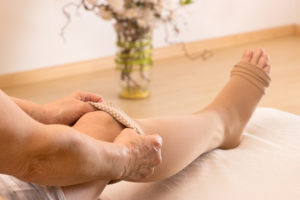Roughly one out of five adults in the U.S. will get varicose veins at some point in their lives. Although they occur more frequently in older people, varicose veins can occasionally show up in younger people as well. The hope of most patients who undergo varicose vein surgery is that the results will last a lifetime, but according to certified vascular doctors, that isn’t always the case.
“My patients often ask ‘will varicose veins come back after treatment?’” says Richard Teed, M.D., a board-certified vascular surgeon with Vascular Specialists of Central Florida. “Unfortunately we know varicose veins are a chronic condition, and although we have many modalities available to us to treat them, there’s always that chance down the road that these varicose veins can come back.”
What Are Varicose Veins?
Varicose veins are dilated, superficial veins caused by a weakening in the blood vessel walls. They can affect any blood vessel in the body but mainly appear in the lower legs and pelvis. Varicose veins can range from spider veins (dilated capillaries on the surface of muscle tissue) to larger, bulging routes in patients’ legs, known as truncal varicosities.
Varicose veins do not pose any health threat to a patient. They typically arise as a result of extended sitting or standing, where increased pressure moves down the legs causing valvular dysfunction and leading blood vessels to dilate.
Other factors that can predispose people to develop varicose veins include:
Gender – The prevalence of varicose veins is higher among women (55%) compared to men (45%). Pregnancy and other hormonal influences like puberty or menopause can increase the risk, as well as the use of some birth control medication. 
Age – The risk for varicose veins tends to increase with age because veins lose elasticity, which causes them to stretch.
Weight – People who are overweight are twice as likely to develop varicose veins as people who are not, while obese people are three times as likely to be affected by them.
Related health conditions – Having blood clots or other ailments that create pressure in the abdomen, such as constipation or tumors, can increase the risk for varicose veins.
How Are Varicose Veins Treated?
Depending on the size and scope of the condition, a patient’s health status and medical history, different modalities are used to treat varicose veins including:
- VNUS radiofrequency ablation (a minimally-invasive outpatient procedure that uses radiofrequency pulses to close off a vein)
- Phlebectomy (a minor surgical procedure that removes bulging veins from the leg)
- Sclerotherapy (a technique mainly used to treat spider veins – a substance is injected into the leg causing veins to turn white and disappear)
- Vein stripping (a surgical procedure to remove long veins from the leg)

Why Do Varicose Veins Recur?
There are three main reasons why varicose veins may reappear after treatment:
- The wrong veins were treated, to begin with
- The right veins were treated, but using the least optimal technique
- New varicose veins formed due to further blood valve failure
According to Dr. Teed, treatment-related recurrence is not the only cause for the reappearance of varicose veins. “Varicose veins are also more likely to recur in patients who have risk factors such as standing for long periods of time or a genetic component with a family history that can contribute to making this potentially an issue that will recur down the road,” he explains.
“The important thing to remember is that even if they do come back, we can always treat them again in the same way and hope for success.”
The best defense against experiencing treatment-related recurrence is to visit a vascular specialist trained to administer the most effective varicose vein procedures and techniques.
